Why every drop matters for Indian automakers
With water being an increasingly scarce resource, automakers in India are deploying innovative measures to conserve and re-use it across multiple operations while also creating green zones of their own.
Every product that you buy needs water during its manufacturing process. So, specific to the automotive industry, do you know that approximately 147,631 litres or 39,000 gallons of water are required to produce a single new car including its tyres? The requirement will be less for a two- or three-wheeler and plenty more for a truck or bus.
While the world is struggling with the ongoing coronavirus pandemic, which struck the world as recent as December 2019, the continued callous attitude of people, industries and some countries the world over, over several decades, has given birth to another disaster of bigger proportions — water shortage.
The execution of various man-made activities at the cost of wiping out green belts and dumping of industrial effluents into river streams to get rid of the waste generated by chemical factories, power plants and almost every other form of economic activity which seems to drive humanity forward, have pushed nature back into its deepest trenches.
The automotive industry, which is a major contributor to any country’s GDP, has a lot riding on its shoulders to project itself as a sustainability-driven business in times when there is much anguish among global citizens about conservation of these natural resources that will only determine the survival and health of future generations.
According to an S&P Global’s report — The State of Green Business 2020 — published earlier this year by Greenbiz, greenhouse gas emissions (GHG) and water consumption remain the most material impact categories across the corporate value chain, contributing around 41 percent and 22 percent, respectively, to the natural capital costs globally among the companies assessed in the study.
As a result, the automotive industry worldwide can be seen doing its bit and actively engaging in resource conservation practices to wash out the stain of being heavy consumers of water. In India too, vehicle and component manufacturers are gradually increasing process efficiencies of water-intensive operations such as paint application on vehicle exterior, re-using processed water and also limiting intake of fresh water for any non-human consumption.
Autocar Professional reached out to some players in the Indian automotive sector to get a sense of what steps they are taking at different levels of the operations including manufacturing, offices, R&D and dealerships to effectively save the precious resource. These are the ones who replied to our detailed questionnaire.
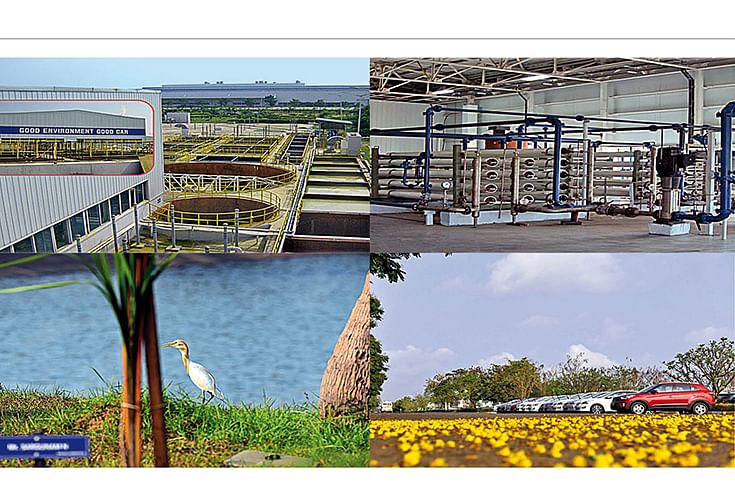
Hyundai's Sprawling 750,000-units-per-annum plant in Sriperumbudur, which engages in rainwater harvesting, maintains a zero discharge policy with 100 percent water getting recycled. All shopfloor-generated effluents are treated and recycled through reverse osmosis for use in the plant.
How Hyundai Motor India is making a difference
Hyundai Motor India (HMIL) says its social responsibility mandates it to transcend conventional thinking in areas pertaining to sustainability and has defined the five key values — customer, environment, collaboration, people and community — each reflecting the interest of the company’s stakeholders.
With a combined annual capacity of 750,000 units across its two assembly lines in Sriperumbudur, Chennai, the company says it has set a precedent in developing technologically advanced products, determining its manufacturing prowess and the sustainability endeavours that it has undertaken alongside. According to SS Kim, managing director and
CEO, HMIL, “Our manufacturing facility is a great example of green manufacturing with self-sustainable resources. We ensure that every step in the making of a car and beyond is sustainable and conducive for the environment. To ensure sustainable practices throughout the year, the Hyundai Motor India plant (spread across 535 acres) follows eco-friendly processes in order to conserve resources and reduce consumption of energy and water.”
In 2018, the company reached the milestone of planting one million trees inside the plant premises to maintain a zero discharge policy. Hyundai also aggressively follows rainwater harvesting. The Chennai plant has six ponds with total capacity of 335,000 tonnes (approximately 950,000 metric cube). The rainwater catchment area is increased from 45 to 75 percent by harvesting the rainwater collected from Plant I.
This has led to a rise in the quantity of rainwater, collected per mm of rainfall from 550 tonnes to 750 tonnes. Some measures are explained in detail:
- Recycle – Internal Recycle Reverse Osmosis Plant: Recycling or reclamation of water is imperative to achieve wastewater management. Reclaimed water is used more than once before it passes back into the natural water cycle. Hyundai says that its state-of-the-art multi-stage recycle RO plant ensures zero liquid discharge operations at the plant. All effluents generated from the shopfloors are fully treated and later recycled through reverse osmosis (RO) for use in the plant. Over 30 percent of water utilised is through recycled RO. Low concentration or rejected water is used for gardening and landscaping purposes. Additionally, rejected water from the drinking water processing RO plant is used for first stage of vessel washing inside canteens.
- Reduce – Water consumption reduction through conservation measures: This is for reduced usage of water that helps efficient utilisation of water at different stages of the product manufacturing lifecycle. Hyundai uses technologically improved and advanced processes to ensure minimum utilisation of water. This includes Variable Frequency Drive (VFD) controls pumps to deliver water at reduced pressure, which reduces 15 percent of average water consumption every day. To further minimise wastage of water, conventional taps have been retrofitted with aerator fittings to reduce water flow and reducing up to 1.2 percent of average water consumption daily. The plant also uses processed drain water for ASU-recycled water and scrubbers after filtering, which reduces 4 percent of average water consumption per day. As a result, HMIL has been able to reduce overall water consumption by 36 percent in last 3 years despite increase in production volumes.
Water saving at dealer level: At the dealership level, on World Environment Day 2017, Hyundai launched its ‘Save Water, Share Water’ campaign to encourage customers to opt for ‘dry wash’ at Hyundai service centres. The dry wash facilitates savings of up to 120 litres of water per car wash. The water saved during this period of 45 days was donated to drought-affected villages in India for drinking purposes.
Over the past three years, this campaign has seen 28 lakh cars getting dry washed resulting in savings of 320 million litres of water. On a monthly basis, Hyundai saves an average of 9 million litres of water in its network.
Furthermore, Hyundai has adopted three villages under the 'Dream Village Project' with an aim to empower communities with employment opportunities and improving health standards with a focus on cleanliness and sanitation. To protect the environment under the ‘Green Move’ initiative, approximately 325,000 saplings have been planted across 650 acres, benefitting 210 farmers.
“We feel it’s imperative for corporations to work in collaboration with the government to secure an evolving culture of sustainable development and empathy towards nature and ecologically vulnerable sections of the society,” said SS Kim.
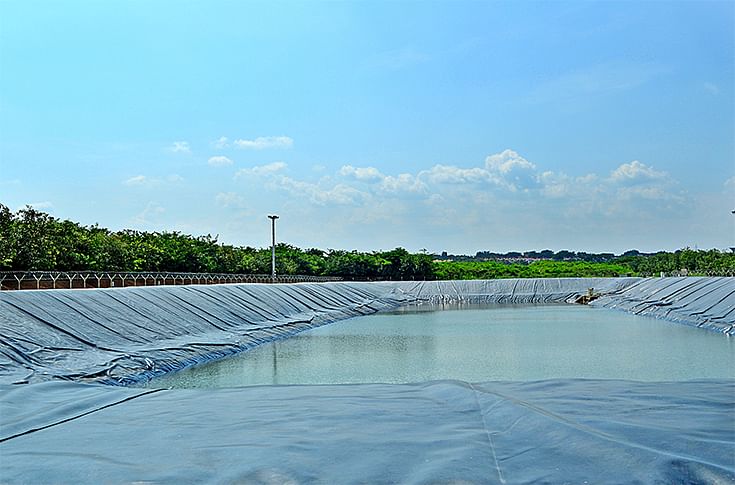
TKM has created two ponds within the Bidadi plant, which get regenerated by rainwater harvesting. They also cater to the requirements of the paint shop that uses low-VOC, water-based solvents to minimise impact on the environment. TKM claims recycling levels closer to 95 percent.
Toyota Kirloskar Motor brings eco-consciousness to the fore
Japanese carmaker Toyota has a long-term sustainability vision with one of the key goals of the ‘Toyota Environmental Challenge 2050’ being minimising the use of water across its operations the world over. At its Indian facility in Bidadi, on the outskirts of Bangalore in Karnataka, its local arm Toyota Kirloskar Motor (TKM) produces two of its most popular models — the Innova Crysta MPV and Fortuner SUV — at its 100,000-unit annual capacity line, also known as the Plant 1, while the Yaris sedan and the Camry Hybrid are built at the 210,000-unit Plant 2, within the same 432-acre campus.
The company has been strategising ways to improve the efficiency of its in-plant operations while another crucial aspect for it in this whole agenda of conserving water is rainwater harvesting, wherein it has recorded up to 100 percent water captivation when the monsoon has been plentiful in Southern India. It says that other than use for critical purposes such as preparing food and drinking, there is no intake of fresh water for industrial purposes from the Kaveri river supply in the area. Instead, TKM has built two ponds within the plant which get regenerated by rain-water harvesting and claims touching recycling levels closer to 95 percent.
The two ponds also cater to the requirements of the paint shop. Company says that the paint process in itself has been switched to using low-VOC, water-based solvents to minimise impact on the environment by containing harmful discharge and effluents.
According to Vikram Gulati, Country Head and Senior Vice-President, External Affairs, Public Relations, Corporate Social Responsibility and Corporate Governance, TKM, “Our aspiration is at some point to provide water back to the society. We have also engaged with the local community on a lake rejuvenation project closer to the plant.”
The company is working with many villages in Karnataka and under its CSR initiative, has installed 41 water units that benefit 258 villages and over 267,000 villagers. “Our model is based around sustainability. We do the capital expenditure and then hand over the installations to the local panchayat (governance body) for making it self-reliant,” adds Gulati.
“We have kept a nominal usage charge of Rs 5 per 20 litre consumption so that people continue to value water as a precious resource,” he remarks.
As a responsible global organisation, Toyota is beginning to spread these measures at its suppliers and dealers as well to bring a chain reaction in the entire ecosystem. The Toyota Environmental Challenge 2050 incorporates six key goals on sustainability by the virtue of which it aims to contribute to a better society through a net-positive impact.
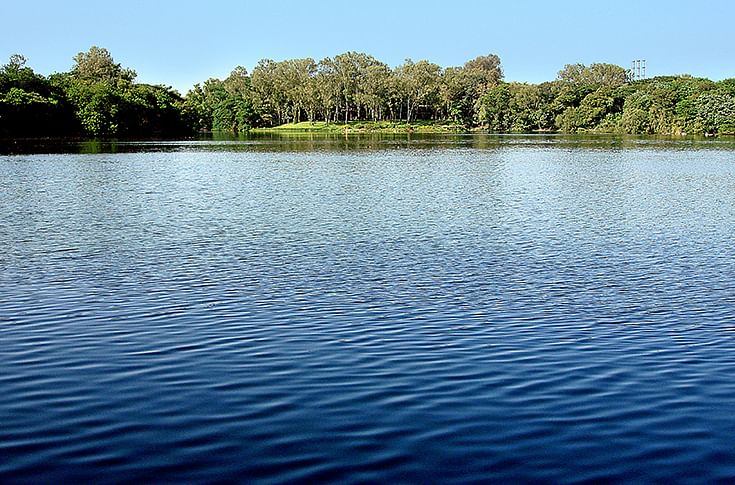
Tata Motors says it conserved 889,000 metric cubes of water in FY2020, which amounts to 18 percent of total water consumption for the 11-month period of the last financial year.
Tata Motors walks the conservation talk
Indian CV and PV major Tata Motors too recognises the critical importance of greenhouse gas emissions and water conservation to its manufacturing plants across India. The company says that energy and environmental performance is reviewed in a periodic and structured manner at the operations level, business unit level and Board level. Tata Motors actively benchmarks energy and environmental performance among its own plants as well as with peers, and adopts best practices across plant locations for maximum impact.
With manufacturing facilities located at Jamshedpur, Lucknow, Pantnagar, Pune, Sanand and Dharwad, these units source water for manufacturing and for domestic purpose from surface and ground water. Tata Motors says it is acutely aware of the increasing pressure on these existing water resources from competing users such as urban cities, irrigation and industrial expansion. In accordance, it has adopted a strategy to continuously improve its water use efficiency through process improvements and leakage elimination, and recycling waste water for re-use in its operations. Rainwater harvesting is done through ground water re-charge as well as impounding runoff in water bodies.
Some of the key ongoing water conservation programs include:
- Increasing water use efficiency: As paint- and- aggregate shops conduct water-intensive manufacturing processes, the company has reduced the specific water consumption by modification of processes in pre-treatment line of paint shops to minimise drag-out and carryover, which eliminates contamination of bath solutions, thereby increasing the frequency of bath discards as well as fresh-water top-up.
For instance, in the pre-treatment section of powder coating shop at Dharwad, changeover from fixed-water sprayers to manual spray for rinsing operation led to a saving of 12 litres of water per body. Water consumption is monitored station-wise and this water use mapping is used for delivering water at the desired pressure and quantity. The team works on identifying underground water leakages and isolation or rectification of the affected sections of the water distribution network. - Rainwater harvesting: Surface water runoff from the plants is harvested downstream within the premises by creating large artificial lakes. Again, for Dharwad, such lakes are crucial for the company’s water requirements as the piped-water supply and groundwater sources are scarce and unreliable. These lakes augment the water supply at Jamshedpur and Sanand too. At Lucknow, these lakes also serve as ground water re-charging structures. At its passenger vehicle factory in Pune, as there was no space to create a lake for collection of harvested rainwater, the company has developed a dynamic method of pumping storm-water from the terminal storm-water chamber and collect in water storage tanks, thereby reducing corresponding consumption of piped water from public utility.
Across all of its plants, such water bodies have become wetland habitats and serve as a safe habitat for many indigenous and migratory birds. The green belt developed in the areas surrounding these water bodies also host a wide variety of local biodiversity. - Recycling waste water: The company says that adequate infrastructure for tertiary treatment of treated effluent is in place to comply with zero liquid discharge conditions where applicable. These effluent recycling facilities provide permeate which is blended with process water for re-use in the manufacturing process. Across plants, the quantity of effluent recycled (as on YTD February 2020), would cater to 1.76 months (44 days) of freshwater consumption, claims Tata Motors.
All of its plants track process-wise water consumption through metering and monitoring systems and have designated teams in place to immediately rectify any identified leakages. Tata Motors has partnered with domain experts for specialised services like underground leak detection, water re-circulation systems and tertiary treatment of treated effluents. It also engages with its employees and their families, as well as local suppliers to raise awareness on water conservation.
All of these efforts contribute to a year-on-year reduction in specific water consumption. As per Tata Motors, a total of 889,000 metric cubes of water was conserved through these efforts in FY2019-20 YTD February, which amounts to 18 percent of total water consumption for 11 months of the last financial year.
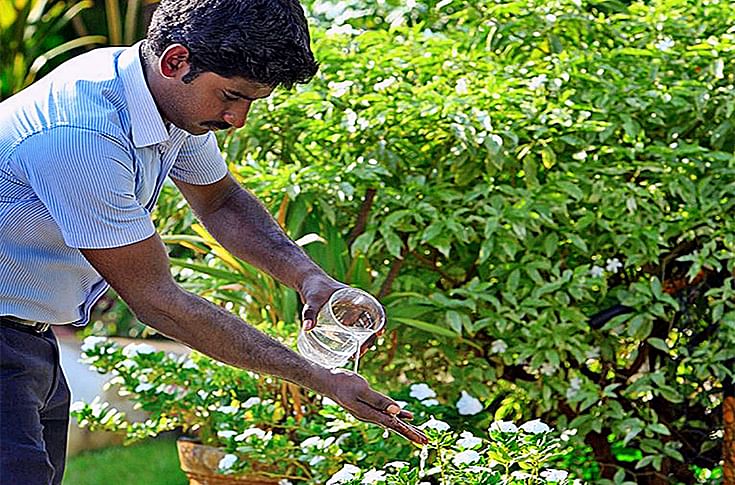
Freudenberg Performance Material, which makes technical fabrics, aims to consume less water and work with more recycled water.
Freudenberg Performance Material: doing more with less
Freudenberg Performance Material, a leading manufacturer of performance technical fabrics, aims to consume less water and work with more recycled wastewater in its production facilities. A part of the Freudenberg Group, it has its presence across industries including automotive.
It works with optimal solutions in the Chennai plant. With water being a major concern in the city, the Head of the Chennai site, Gunasekaran Sivasailam has to work on certain aspects making sure they consume less and work with more recycled water. All the wastewater is treated and reused. The Freudenberg team for Health, Environmental Protection & Workplace Safety (EHS) collaborated with the Industrial Waste Management Association in Chennai to develop effective filtration. After months of analysis and lab tests, a multi-stage filter technology was commissioned in mid-2016 that is perfectly suited to conditions in Chennai. “This allowed us to recycle 100 percent of our wastewater. We no longer need 4.4 litres of water to produce a kilogram of textile but only 2.7 litres. The solid particulate matter generated during filtration is then sold to the cement industry," says Sivasailam.
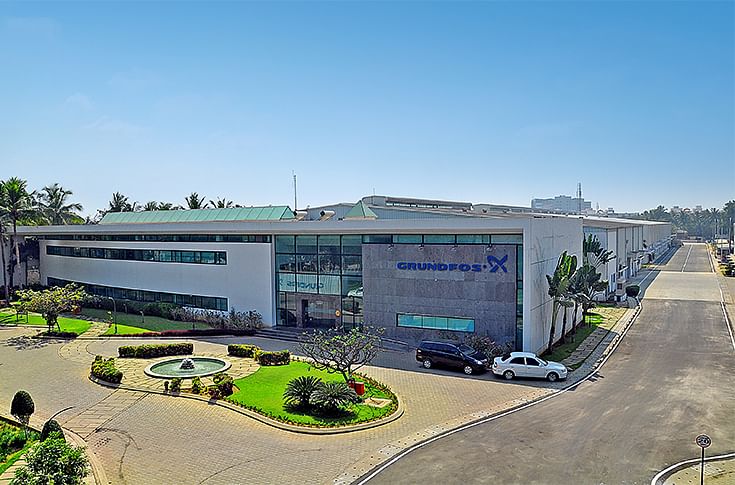
Grundfos' Chennai HQ is India’s first commercial gold-rated green building, supported by energy-efficient installations and zero liquid discharge abilities. It also supports rainwater collection, harvesting, and solar photovoltaics among other initiatives.
Grundfos India: LEEDing in green building
Global leader in advanced pump solutions and water technology, Denmark-based Grundfos has improved and expanded its green solutions since its inception in India. Speaking to Autocar Professional, Saravanan Panneer Selvam, general manager, Grundfos India, said, "Our facilities are designed to minimise their impact on the environment. Our Chennai headquarter is India’s first commercial gold-rated green building, supported by energy-efficient installations and zero liquid discharge abilities. It also supports rainwater collection, harvesting, and solar photovoltaics. In 2011, our factory also received the gold certification from the Indian Green Building Council (IGBC), further followed by a Platinum LEED rating from IGBC this year."
Summary
As the auto industry becomes the one to be enabling sustainable transition into the future with its solutions like electrification and zero-emission drivetrains for a cleaner tomorrow, it is also imperative that it neutralises its environmental impact. Technology will clearly determine the steps it can take towards being a low-water-consuming industry. This feature, which sees a few of the companies which are making a difference, is reflective of many others which are also driving a host of innovative measures to save every drop of water.
With inputs by Sricharan R
This feature was first published in Autocar Professional's June 1, 2020 issue.
RELATED ARTICLES
Belrise Industries: A Story of Grit and Focus
The Belrise Industries IPO is the culmination of a multi-decade journey by entrepreneur Shrikant Badve that started in a...
Mahindra and Lightweighting: Solid Steel To Nimble Aluminum
Stricter emission regulations and rising fuel efficiency targets are driving a fundamental transformation in powertrain ...
Hero vs Honda: In Numbers
A Comparative Study of Honda Motorcycle & Scooter India and Hero MotoCorp.





 22 Mar 2021
22 Mar 2021
 31719 Views
31719 Views





 Shahkar Abidi
Shahkar Abidi


 Ketan Thakkar
Ketan Thakkar

 Autocar Professional Bureau
Autocar Professional Bureau

